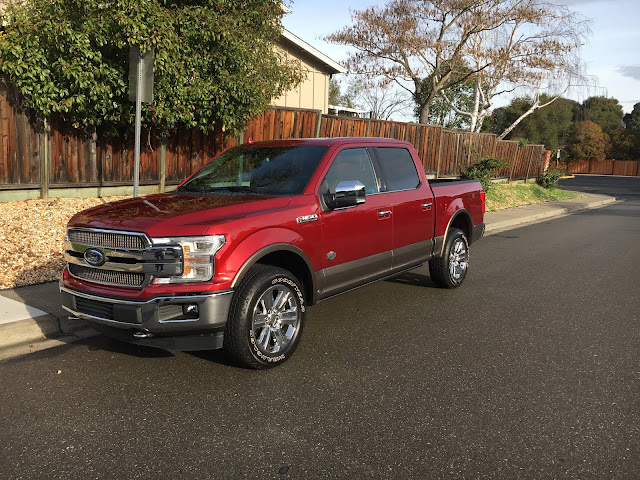California versus Trump. Auto Companies Take Sides.
I try to keep politics out of my auto writings but sometimes they intrude regardless. This is one of those times.
California has long been at the forefront of the fight against air pollution for good reasons. California has had some of the worst air pollution in the nation. The primary source has been mobile sources - motor vehicles.
In its fight against vehicular pollution California set its own fuel economy requirements and has mandated zero emission requirements for vehicles. The Trump administration argues that only the federal government has the right to set fuel economy standards.
Initially some auto makers - Ford, Honda, and VW - sided with California. This morning it is being reported that GM, FCA, Toyota, and Hyundai are siding with Trump.
It has been argued that California's regulations go to far. And it has been argued that they do not go far enough. What I do know is that California has set its own emission standards and testing since the early 1970s. To now argue that they do not have the right to regulate emissions seems a folly to me.
To be honest I have to admit that I sat on the California Inspection and Maintenance Review Committee (IMRC) for almost a decade. The IMRC advised the legislature on the smog inspection program.
California has not always done a perfect job concerning air pollution and the smog inspection program. At the same time the state wants to impose stricter fuel economy standards and zero-emission vehicles it allows huge loop-holes in the smog inspection program.
Even though I am a hot-rodder at heart I side with clean air. I see flaws with zero-emission vehicles but at the same time I see their need. We may never meet the goal of all zero-emission vehicles but if we don't aim high we will not even come close.
You can read an Automotive News article on this subject at: https://www.autonews.com/regulation-safety/gm-toyota-fca-back-trump-calif-emissions-challenge?utm_medium=social&utm_source=facebook&utm_term=automotive%20news&utm_content=5814e563-2148-40ab-9ef9-a7e37ea83206
California has long been at the forefront of the fight against air pollution for good reasons. California has had some of the worst air pollution in the nation. The primary source has been mobile sources - motor vehicles.
In its fight against vehicular pollution California set its own fuel economy requirements and has mandated zero emission requirements for vehicles. The Trump administration argues that only the federal government has the right to set fuel economy standards.
Initially some auto makers - Ford, Honda, and VW - sided with California. This morning it is being reported that GM, FCA, Toyota, and Hyundai are siding with Trump.
It has been argued that California's regulations go to far. And it has been argued that they do not go far enough. What I do know is that California has set its own emission standards and testing since the early 1970s. To now argue that they do not have the right to regulate emissions seems a folly to me.
To be honest I have to admit that I sat on the California Inspection and Maintenance Review Committee (IMRC) for almost a decade. The IMRC advised the legislature on the smog inspection program.
California has not always done a perfect job concerning air pollution and the smog inspection program. At the same time the state wants to impose stricter fuel economy standards and zero-emission vehicles it allows huge loop-holes in the smog inspection program.
Even though I am a hot-rodder at heart I side with clean air. I see flaws with zero-emission vehicles but at the same time I see their need. We may never meet the goal of all zero-emission vehicles but if we don't aim high we will not even come close.
You can read an Automotive News article on this subject at: https://www.autonews.com/regulation-safety/gm-toyota-fca-back-trump-calif-emissions-challenge?utm_medium=social&utm_source=facebook&utm_term=automotive%20news&utm_content=5814e563-2148-40ab-9ef9-a7e37ea83206


Comments
When Sacramento implemented CARB, the car manufacturers screamed, but had to comply. And in typical American fashion, they addressed the problem with the cheapest, least work-intensive approach. They tacked on air injection pumps that blew into the exhaust manifold, igniting unburned fuel that was pumped out during the exhaust stroke. They also lowered compression ratios to reduce the formation of nitrous oxides. Hot rodders bemoaned the death of performance automobiles, as horsepower figures plummeted and engines became burdened with smog-sucking mechanisms.
The Japanese took a different approach. If smog was the result of incompletely burned fuel entering the atmosphere, why not burn the fuel more completely? They invested a lot of R&D money into understanding what happens in a car's combustion chambers. They experimented with methods of increasing turbulence and swirl in the cylinders, making for faster and more complete combustion. This involved research into such things as intake manifold design, spark plug placement, the angles at which the valves were set relative to the pistons, piston dome shape, and other such factors. Not cheap, not easy, not quick, but in the end they designed engines that were not only cleaner, but lighter weight (aluminum blocks instead of cast iron) and that produced significantly higher horsepower per given displacement. In simple terms, the engines were cleaner AND more powerful.
And the rest is history. Americans flocked to buy these inexpensive, fuel efficient cars that met CARB specs and were also fun to drive. Detroit and the UAW complained, but that whining fell on deaf ears. It took the U.S. almost a decade to catch up, but eventually we learned to do things better, and to become competitive in the global market.
Walking back CARB strictures is a step in the wrong direction. We CAN have clean air, and competitive (and competitively priced) cars if we're smart about it. Trump's "if it's good for business, it's good for America" approach is antiquated and, as history shows, wrong. We can do better.